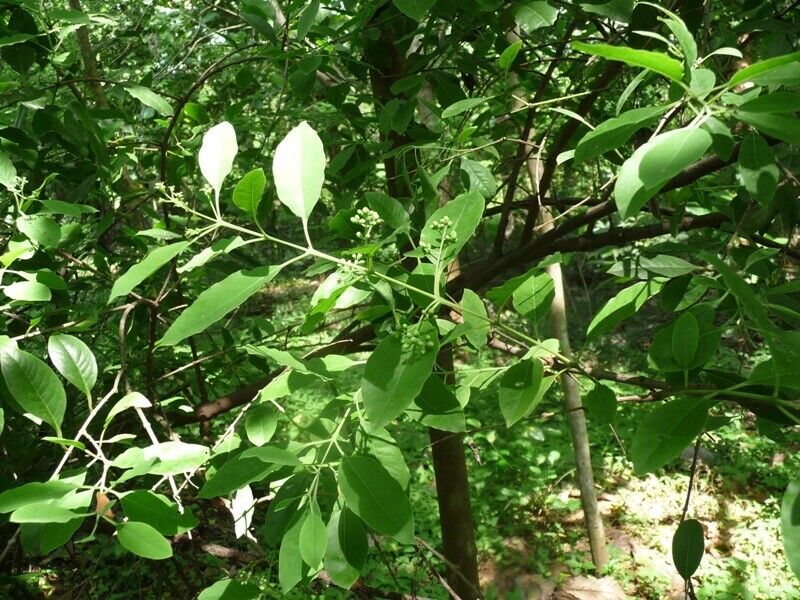Blog
The Essence of Ceylon White Sandalwood Heartwood: A Treasure of Sri Lanka

Ceylon Sandalwood Heartwood, scientifically known as Santalum album, is a highly sought-after tree native to Sri Lanka and other parts of Asia. Renowned for its aromatic heartwood, this species has been treasured for centuries in traditional medicine, perfumery, and religious rituals. The heartwood, which ranges from pale green to white, is particularly valued for its rich fragrance, making it ideal for crafting incense, essential oils, and various cosmetic products.
The Botanical Profile of Ceylon White Sandalwood
Ceylon white sandalwood is a small to medium-sized tropical tree that can grow up to 10 meters tall. It thrives in well-drained soils with moderate rainfall and can be found in various regions of Sri Lanka, particularly in the drier zones. The tree’s heartwood develops over many years, typically taking 12 to 15 years to reach optimal maturity for harvesting. This slow growth contributes to its high market value; currently, the heartwood can sell for around Rs. 25,000 per kilogram in global markets.
Economic Potential of Sandalwood Heartwood Cultivation
The cultivation of Ceylon white sandalwood presents significant economic opportunities for Sri Lanka. According to researchers and growers, expanding white sandalwood farming could boost rural economies and alleviate poverty. Countries like India and Australia have successfully implemented large-scale sandalwood cultivation, contributing substantially to their GDP.In Sri Lanka, the potential for commercial cultivation is immense due to favorable climatic conditions. The tree can be grown as an intercrop alongside coconut or tea plantations, increasing land productivity by approximately 60%. This dual-purpose approach not only enhances income for farmers but also promotes sustainable agricultural practices.
Health Benefits of Sandalwood Heartwood

The heartwood of Ceylon white sandalwood is prized not only for its fragrance but also for its therapeutic properties. The essential oil extracted from the heartwood is rich in alpha-santalol, a compound known for its calming effects and skin benefits. Here are some notable uses:
- Aromatherapy: Sandalwood oil is widely used in aromatherapy for its soothing properties. It helps reduce anxiety and promotes relaxation.
- Cosmetics: Due to its anti-inflammatory and moisturizing qualities, sandalwood oil is commonly found in skincare products. It can help soothe irritated skin and improve complexion.
- Traditional Medicine: In traditional Ayurvedic practices, sandalwood has been used to treat various ailments, including skin disorders and respiratory issues.
- Perfume Industry: The unique scent of sandalwood makes it a staple ingredient in high-end perfumes and incense sticks.
Sustainable Practices in Sandalwood Cultivation
The increasing demand for Ceylon white Sandalwood Heartwood has led to concerns about over-exploitation and sustainability. To combat this issue, sustainable cultivation practices are being implemented across Sri Lanka. Initiatives like the Sandaforest sustainable plantation project focus on responsible harvesting methods that ensure the long-term viability of sandalwood trees.These programs emphasize reforestation efforts; for every tree harvested, several new saplings are planted. This not only preserves the ecosystem but also provides job opportunities for local communities involved in sandalwood farming.
Cultural Significance of Sandalwood Heartwood
Ceylon white sandalwood holds deep cultural significance in Sri Lanka. It is often used in religious ceremonies and rituals due to its sacred associations with purity and spirituality. The wood is carved into intricate designs for religious idols and artifacts, reflecting the craftsmanship that has been passed down through generations.Additionally, the export of sandalwood products contributes to Sri Lanka’s cultural heritage while providing economic benefits through international trade.
Challenges Facing Sandalwood Cultivation
Despite its potential, the cultivation of Ceylon white sandalwood faces several challenges:
- Overharvesting: Unsustainable harvesting practices have led to a decline in wild populations, making conservation efforts crucial.
- Market Fluctuations: The price of sandalwood can be volatile due to changing global demand and supply dynamics.
- Climate Change: Environmental changes may affect the growth conditions necessary for optimal sandalwood cultivation.
Conclusion

Ceylon white Sandalwood Heartwood heartwood represents a unique blend of cultural heritage, economic potential, and ecological importance in Sri Lanka. By embracing sustainable cultivation practices and promoting awareness about its benefits, Sri Lanka can position itself as a leader in the global sandalwood market while preserving this precious resource for future generations.As interest in natural remedies and sustainable products continues to rise globally, Ceylon white Sandalwood Heartwood stands out as a valuable asset—offering not only economic opportunities but also enhancing wellness through its myriad uses. Whether through aromatherapy or skincare applications, this extraordinary wood remains a testament to nature’s bounty and humanity’s enduring connection to it.Incorporating Ceylon white Sandalwood Heartwood into your lifestyle means supporting sustainable practices while enjoying the rich benefits this remarkable tree has to offer. Embrace this treasure from Sri Lanka today!


What are the economic benefits of cultivating white sandalwood in Sri Lanka
How does white sandalwood cultivation contribute to rural development in Sri Lanka
What are the challenges faced in white sandalwood cultivation in Sri Lanka
How does the market demand for white sandalwood oil impact its pricing
What are the best practices for growing white sandalwood in Sri Lanka
Discover more from Nath Mart
Subscribe to get the latest posts sent to your email.
